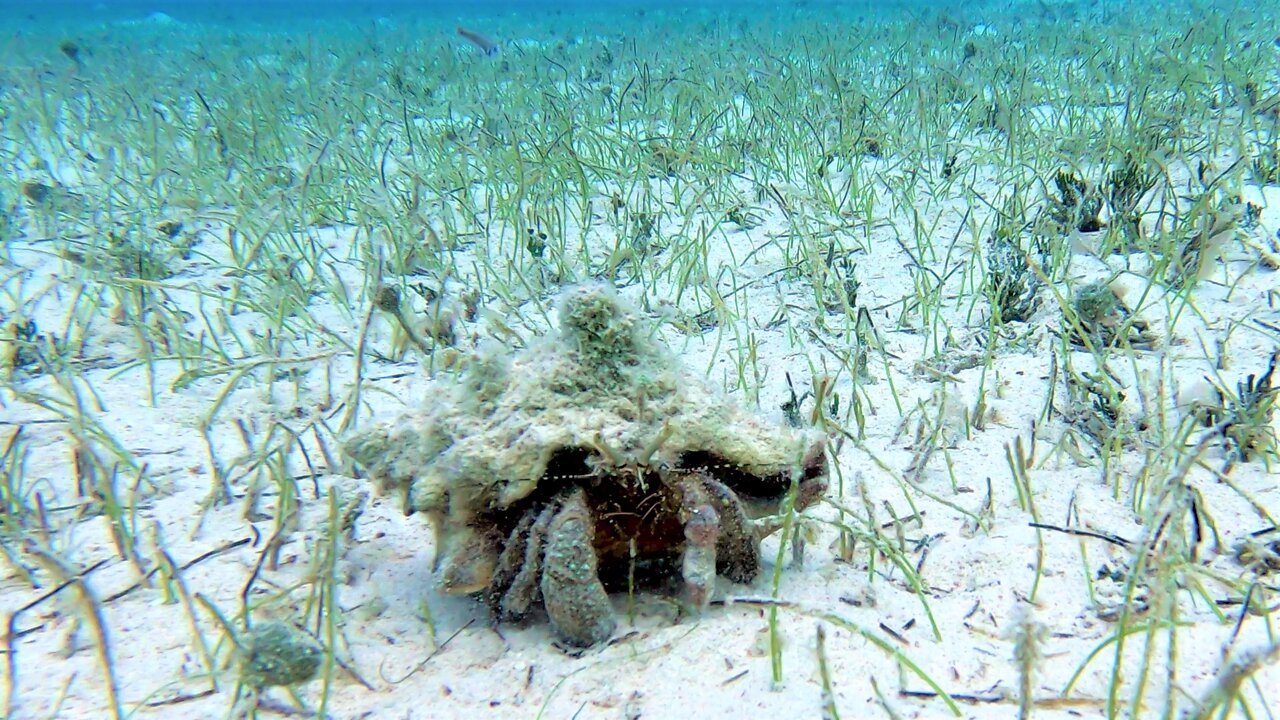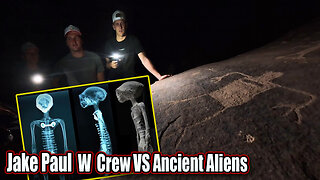Premium Only Content

Giant hermit crab carries heavy home on his back
Hermit crabs are fascinating creatures with a very unique way of protecting themselves from predators. Instead of growing an exoskeleton like most crustaceans, hermit crabs are soft bodied crabs that would be defenseless without the protection of an abandoned shell that was created by another animal. But there is a lot more math and science involved in the selection of the shell than scientists once realized. The process of swapping shells can also involve a complex event that requires the cooperation of many hermit crabs working together in what scientists call a vacancy chain.
Hermit crabs wander the ocean floor at various depths, eating decaying animal and plant matter, keeping the ocean clean and limiting bacteria growth. They provide a valuable service for all who call the ocean their home. As they eat, the hermit crabs grow and eventually they become large enough that they can no longer fully conceal their vulnerable bodies in their current shell. When the shell no longer provides adequate cover, the crab will search for a larger one. If it finds an empty shell and the fit is a good one, the exchange will take place quickly as the crab abandons the old and fits into the new. The abdomen curls around inside to secure the shell in place and the crab will continue on.
The hermit crab knows that the ideal shell will allow for a certain amount of growth and that it also cannot be too heavy. The ideal weight ratio seems to be a shell that is roughly 60% of the crab's bodyweight. If the shell is heavier than this, there is a metabolic cost of carrying it and the crab will grow more slowly. Where this is a serious disadvantage is in attracting females. IN competition, the larger crab gets the girl and this advantage for reproduction rights is crucial. The crab will select his new shell based on size and also weight or density.
This becomes even more interesting when a hermit crab comes upon a good shell that is too large for him. He will wait patiently beside the new shell for up to eight hours. Other crabs will come along and inspect the empty shell. They might also reject the shell if it is too large and they will line up beside the first crab to wait. This can continue until the chain of waiting hermit crabs reaches as many as 20 individuals. Unbelievably, they all line up in order of size in what is known as a vacancy chain. When a crab comes along that accepts and moves into the shell that is sitting vacant, he will abandon his old shell. If his old shell is a better fit for the first crab arrival, the waiting crab will quickly make a switch, followed closely by the others in rapid succession. The crabs will all find themselves in new quarters very quickly, which is crucial to staying protected from predators during the process. Each will then go on his way, eating and growing until the next time they need a new shell.
Unfortunately for some hermit crabs, they might find themselves evicted from a very desirable shell. Crabs will gang up on the male with the ideal shell and they will work together to pry him out. They will then battle for dominance with the new shell being the prize.
When shells are scarce, hermit crabs have been known to use debris or even litter for shelter. If they climb inside containers and cannot get out due to slippery surfaces, they perish. A dead crab emits an odour that attracts other hermit crabs, signaling that a shell is available due to the death of the former owner. This can be fatal to other crabs in the process who will also climb inside and die.
Hermit crabs are interesting and more complex than we once thought. Who would have guessed that they would need to employ math skills to determine the best house for their needs?!
-
 LIVE
LIVE
The Real Tombliboos - Live Streaming
4 hours ago🔴CHARITY DRIVE🔴12 HOURS🔴Extra Life Charity🔴#ExtraLife #extralife4kids - Round 1
61 watching -
 17:54
17:54
Dr Disrespect
19 hours agoDR DISRESPECT vs VAN DAMME in Hitman 3
84.4K11 -
 34:26
34:26
CarlCrusher
13 hours agoJake Paul's Crew vs Ancient Skinwalker Canyon
15.2K2 -
 16:07
16:07
Chris From The 740
1 day ago $0.76 earnedMy BIGGEST Problem with the Ruger RXM – FIXED by Liberty Build Co!
9.34K1 -
 13:29
13:29
Professor Gerdes Explains 🇺🇦
12 hours agoUS Deploys Warships to Venezuela's Coast: A Show of Force Against Putin's Ally
8.76K1 -
 12:12
12:12
The Shannon Joy Show
14 hours ago🔥Carcinogens & Fetal Cells In Your New ‘Universal Vaccine’🔥
9.96K2 -
 10:38
10:38
ariellescarcella
12 hours agoOnlyFans Models Fake Being Trans : Queer Activists Are PISSED
7.84K9 -
 8:00
8:00
Congressman Eli Crane
17 hours agoThe D.C. Crime Problem | Democrats' Greatest Lies – Vol.2
42.9K17 -
 2:05:26
2:05:26
Side Scrollers Podcast
21 hours ago4Chan SUES UK Government + Craig Has Mental Illness Fatigue + Knight Rider REBOOT | Side Scrollers
42.1K8 -
 19:26
19:26
GritsGG
1 day agoChat Picked My Hair Color! All Pink Loadout & Operator Challenge!
34.9K4